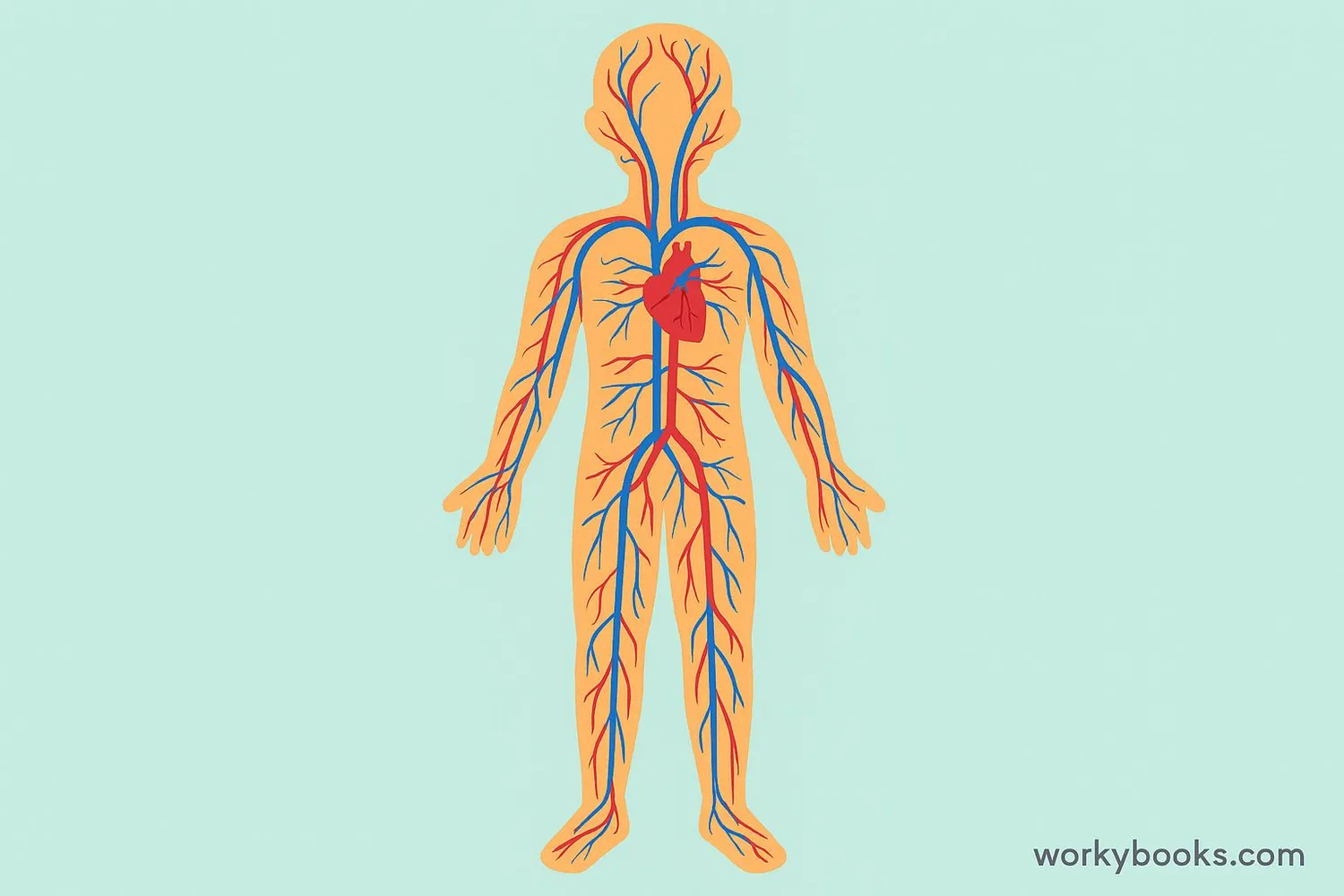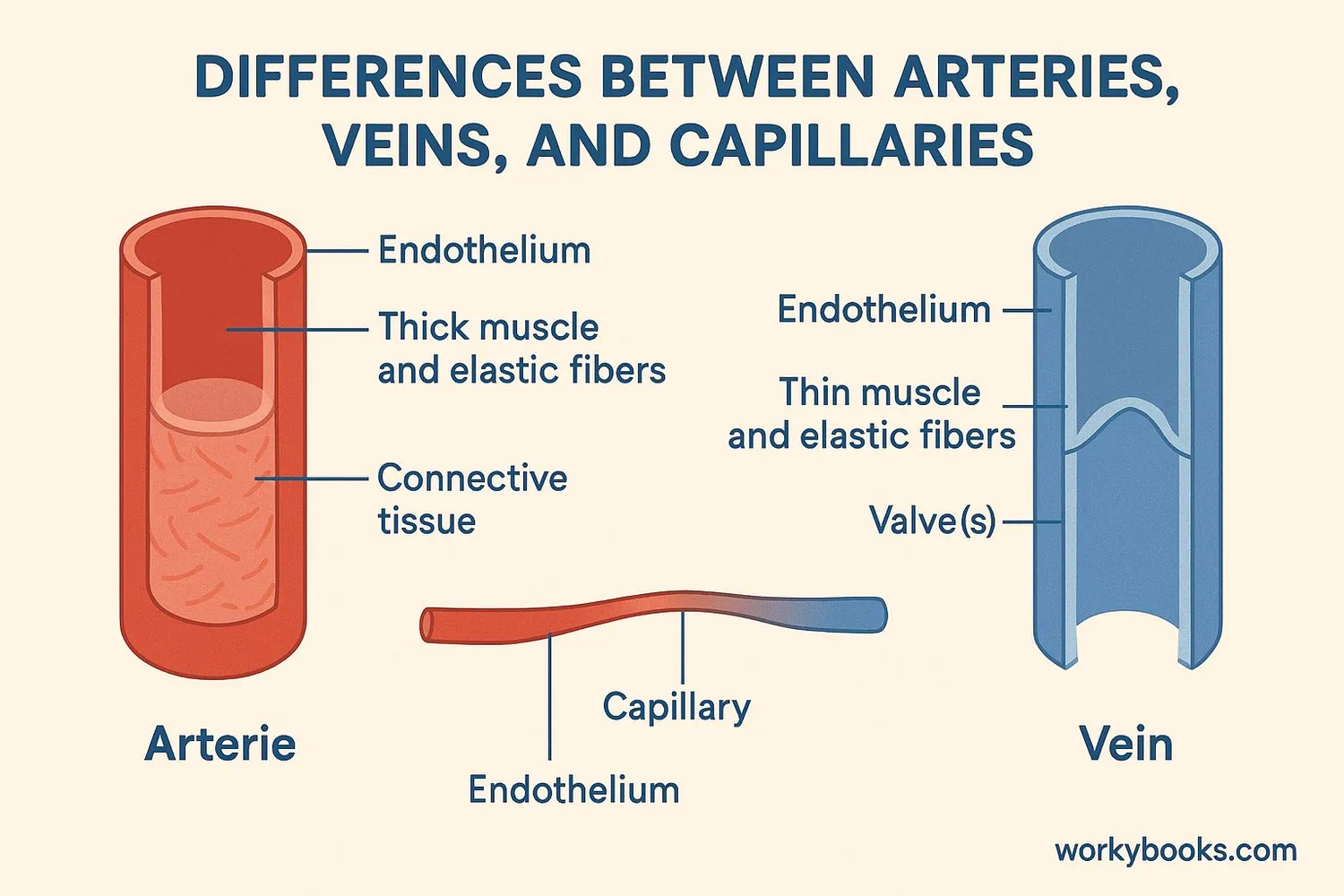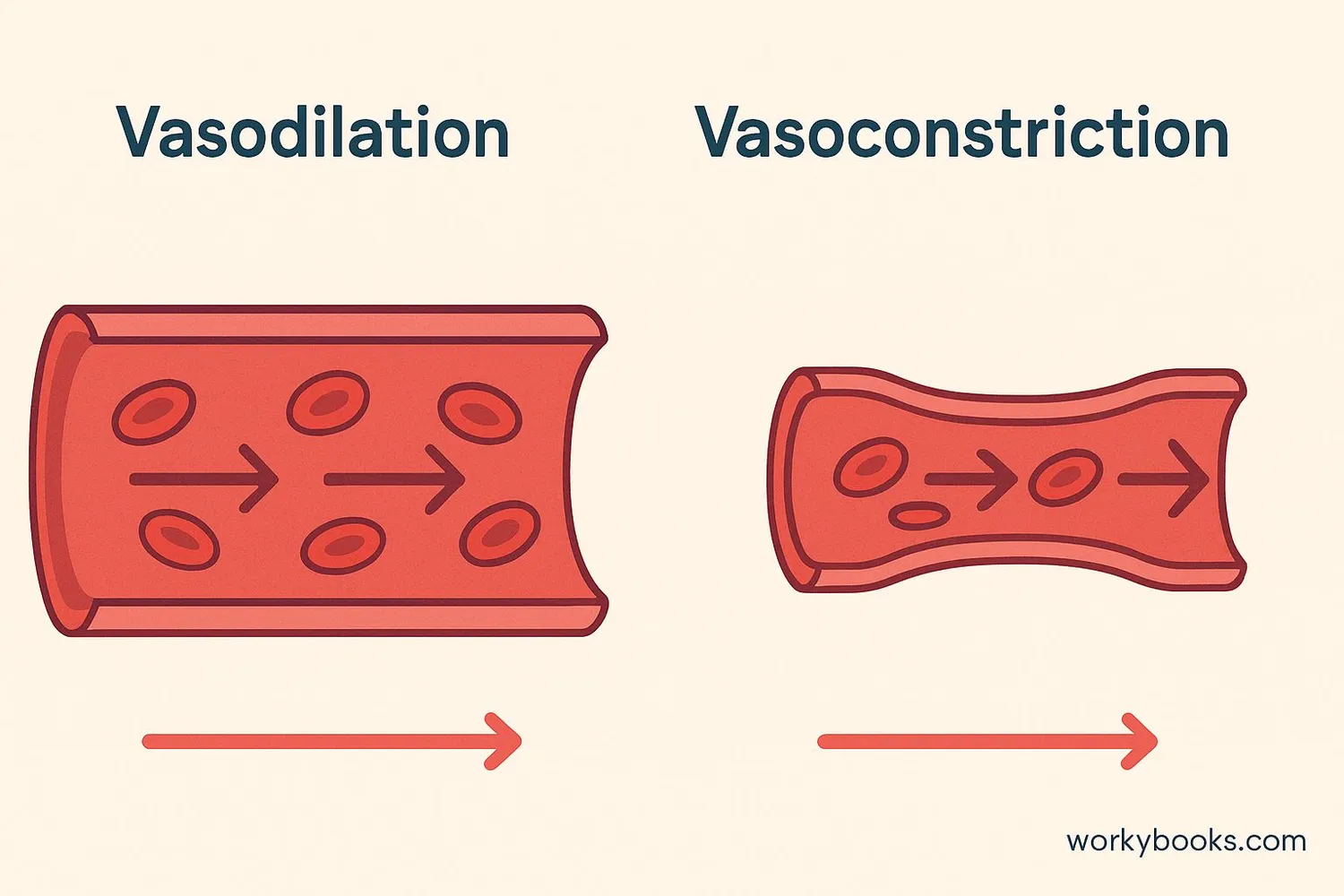Blood Vessels - Definition, Examples, Quiz, FAQ, Trivia
Discover the amazing highways that carry blood throughout your body!
What are Blood Vessels?

Blood vessels are like a network of roads inside your body! They are tiny tubes that carry blood to every part of you. Think of them as your body's delivery system, bringing oxygen and nutrients to your cells while taking away waste products.
These amazing tubes form your circulatory system, which includes your heart and all your blood vessels. Together, they keep blood moving throughout your body. Without blood vessels, your blood couldn't travel from your heart to your toes and back again!
Blood Vessel Fact!
If you lined up all the blood vessels in an adult's body end to end, they would circle the Earth about 2.5 times!
Types of Blood Vessels

There are three main types of blood vessels, each with a special job:
Arteries
Carry oxygen-rich blood away from the heart
Thick, muscular walls
Pulse can be felt
Examples: Aorta, Coronary Arteries
Veins
Carry oxygen-poor blood back to the heart
Thinner walls with valves
Appear blue under skin
Examples: Vena Cava, Pulmonary Veins
Capillaries
Smallest blood vessels
Connect arteries to veins
Where oxygen and nutrients are exchanged
Walls are only one cell thick
The largest artery is called the aorta, which carries blood directly from your heart. The largest veins are the vena cava (superior and inferior), which bring blood back to your heart. The tiniest vessels, capillaries, are so small that blood cells must pass through them in single file!
How Blood Vessels Work

Blood vessels are smart! They can change size to control blood flow. This helps your body send blood where it's needed most. When you exercise, vessels in your muscles widen to deliver more oxygen. When you're cold, vessels near your skin narrow to keep heat inside.
Here's how it works:
Vasoconstriction
Blood vessels narrow to reduce blood flow
Vasodilation
Blood vessels widen to increase blood flow
Endothelium
Special lining that helps control blood flow
Blood Pressure
Force of blood against vessel walls
The inner lining of blood vessels is called the endothelium. This special layer helps control blood flow and prevents clotting. When this layer gets damaged, problems like atherosclerosis (hardening of the arteries) can develop.
Why Blood Vessels Are Important

Blood vessels are essential for keeping you alive and healthy! Here's why they're so important:
Oxygen Delivery
Carry oxygen from lungs to all body cells
Nutrient Transport
Deliver nutrients from food to cells
Waste Removal
Carry away carbon dioxide and other wastes
Without blood vessels, your body couldn't:
• Deliver oxygen to your muscles and brain
• Transport nutrients from your digestive system
• Remove waste products from your cells
• Fight infections with white blood cells
• Regulate your body temperature
Keeping your blood vessels healthy through good nutrition and exercise is one of the best things you can do for your body!
Blood Vessels Quiz
Test your knowledge with this blood vessels quiz! Answer all 5 questions to see how much you've learned.
Frequently Asked Questions
Here are answers to common questions about blood vessels:
Fun Blood Vessel Trivia
Discover amazing facts about your blood vessels!
Superhighway System
Your body contains about 60,000 miles of blood vessels! That's long enough to circle the Earth more than twice!
Tiny but Mighty
Capillaries are so small that 10 of them side by side are only as wide as a human hair! Red blood cells must line up single file to pass through.
Unique as Fingerprints
Everyone has a unique pattern of blood vessels in their retina (the back of the eye). Some security systems use this pattern for identification!
Amazing Growth
A baby develops its complete network of blood vessels in just the first 20 days after conception - before most mothers even know they're pregnant!


